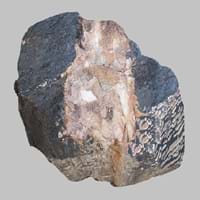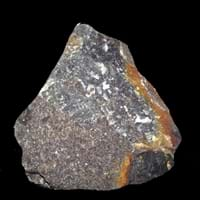Definition
Claystone is a fine-grained, dark gray to pink sedimentary rock which mainly consists of compacted and hardened clay
Dolomite is a sedimentary rock containing more than 50 percent of the mineral dolomite by weight
Origin
Unknown
Southern Alps, France
Discoverer
Unknown
Dolomieu
Etymology
From English clay and stone as the rock contains more amount of clay
From French, from the name of Dolomieu (1750–1801), the French geologist who discovered the rock
Class
Sedimentary Rocks
Sedimentary Rocks
Sub-Class
Durable Rock, Medium Hardness Rock
Durable Rock, Medium Hardness Rock
Group
Not Applicable
Not Applicable
Other Categories
Fine Grained Rock, Opaque Rock
Coarse Grained Rock, Fine Grained Rock, Medium Grained Rock, Opaque Rock
Color
Black, Blue, Brown, Green, Grey, Orange, Red, White, Yellow
Black, Brown, Colourless, Green, Grey, Pink, White
Durability
Durable
Durable
Scratch Resistant
Yes
Yes
Appearance
Rough and Dull
Glassy or Pearly
Interior Uses
Decorative Aggregates, Entryways, Floor Tiles, Homes, Interior Decoration
Decorative Aggregates, Homes, Interior Decoration
Exterior Uses
As Facing Stone, Roof Tiles
Garden Decoration, Office Buildings
Other Architectural Uses
Curbing
Not Yet Used
Construction Industry
As a Sintering Agent in Steel Industry to process Iron Ore, Cement Manufacture, Construction Aggregate, for Road Aggregate, Making natural cement, Raw material for the manufacture of mortar
As a Flux in the Production of Steel and Pig Iron, As a Sintering Agent in Steel Industry to process Iron Ore, As Dimension Stone, Cement Manufacture, for Road Aggregate, Making natural cement, Manufacture of Magnesium and Dolomite Refractories, Production of Glass and Ceramics, Serves as an Oil and Gas Reservoir rock
Medical Industry
Not Yet Used
Taken as a Supplement for Calcium or Magnesium
Antiquity Uses
Artifacts, Sculpture, Small Figurines
Artifacts, Jewellery, Monuments, Sculpture, Small Figurines
Commercial Uses
Pottery
An Oil and Gas Reservoir, As a Feed Additive for Livestock, Gemstone, Metallurgical Flux, Production of Lime, Soil Conditioner, Source of Magnesia (MgO)
Types
Not Available
Boninite and Jasperoid
Features
Available in Lots of Colors and Patterns, Smooth to touch, Very fine grained rock
Host Rock for Lead, Traps for subsurface fluids like Oil and Natural Gas., Zinc and Copper Deposits
Archaeological Significance
Monuments
Not Yet Used
Used
Famous Monuments
Not Applicable
Data Not Available
Famous Sculptures
Data Not Available
Data Not Available
Formation
Claystone is generally quite soft, but can be hard and brittle. It forms due to weathering of mudstone.
Dolomite rocks are originally deposited as calcite or aragonite rich limestone, but during diagenesis process, the calcite or aragonite is transformed into dolomite.
Mineral Content
Biotite, Chlorite, Feldspar, Micas, Muscovite or Illite, Plagioclase, Pyrite, Quartz
Clay Minerals, Pyrite, Quartz, Sulfides
Compound Content
Aluminium Oxide, Ca, NaCl, CaO, Iron(III) Oxide, MgO, Silicon Dioxide
NaCl, CaO, Carbon Dioxide, Magnesium Carbonate, MgO
Types of Metamorphism
Not Applicable
Burial Metamorphism, Cataclastic Metamorphism, Contact Metamorphism
Types of Weathering
Biological Weathering, Chemical Weathering, Mechanical Weathering
Not Applicable
Types of Erosion
Coastal Erosion, Water Erosion
Not Applicable
Grain Size
Fine Grained
Medium to Fine Coarse Grained
Fracture
Not Available
Conchoidal
Porosity
Very Less Porous
Less Porous
Luster
Dull
Vitreous and Pearly
Compressive Strength
Not Available
Transparency
Opaque
Transparent to Translucent
Density
2-2.9 g/cm3
2.8-2.9 g/cm3
Resistance
Heat Resistant, Impact Resistant
Heat Resistant, Pressure Resistant, Wear Resistant
Deposits in Eastern Continents
Asia
Bangladesh, China, India, Russia
China, India
Africa
Ethiopia, Kenya, Morocco, South Africa, Tanzania
Morocco, Namibia
Europe
Austria, France, Germany, Greece, Italy, Romania, Scotland, Spain, Switzerland
Austria, Italy, Romania, Spain, Switzerland
Others
Not Yet Found
Not Yet Found
Deposits in Western Continents
North America
Canada, Panama, USA
Mexico, USA
South America
Bolivia, Chile, Colombia, Ecuador, Peru, Venezuela
Brazil, Colombia
Deposits in Oceania Continent
Australia
New South Wales, New Zealand, Queensland, Victoria, Western Australia
New South Wales, Queensland, Yorke Peninsula
All about Claystone and Dolomite Properties
Know all about Claystone and Dolomite properties here. All properties of rocks are important as they define the type of rock and its application. Claystone and Dolomite belong to Sedimentary Rocks.Texture of Claystone is Clastic whereas that of Dolomite is Earthy. Claystone appears Rough and Dull and Dolomite appears Glassy or Pearly. The luster of Claystone is dull while that of Dolomite is vitreous and pearly. Claystone is available in black, blue, brown, green, grey, orange, red, white, yellow colors whereas Dolomite is available in black, brown, colourless, green, grey, pink, white colors. The commercial uses of Claystone are pottery and that of Dolomite are an oil and gas reservoir, as a feed additive for livestock, gemstone, metallurgical flux, production of lime, soil conditioner, source of magnesia (mgo).










